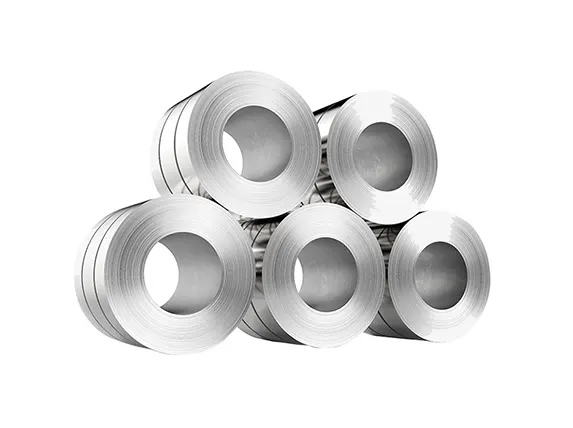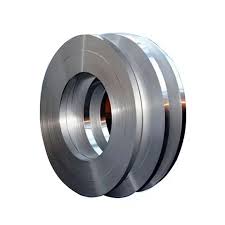420 J1 Stainless Steel Profile


SS 420 J1 Basic Information
General Properties
420J1 has a chemical composition that includes carbon (C: 0.16-0.25%), chromium (Cr: 12.0-14.0%), and other elements in smaller amounts. It is magnetic and can be hardened to a Rockwell hardness of approximately HRC52-55 after heat treatment. Lower carbon content than 420, offering better corrosion resistance but lower hardness.
التطبيقات
Common applications for 420J1 stainless steel include food preparation equipment, kitchen knife blades, industrial machinery blades, mechanical parts, surgical instruments, and decorative applications where standard corrosion resistance is sufficient.
Standard
420J1 aligns with international standards such as JIS G4303 for stainless steel bars, JIS G4304 for hot-rolled stainless steel plate, sheet, and strip, and JIS G4305 for cold-rolled stainless steel plate, sheet, and strip.
Resistance of Stainless Steel 420J1
Corrosion Resistance:
420J1 is better corrosion resistance than 420 due to lower carbon content, suitable for mild corrosive environments.
Heat Resistance:
While 420J1 has good resistance to corrosion at room temperature, its performance in high-temperature environments is limited due to a loss of ductility at sub-zero temperatures and a loss of strength at elevated temperatures due to over-tempering. Similar to 420, but lower hardness retention at high temperatures.
Type 420J1 Stainless Steel Processing
Machinability:
420J1 is relatively easy to machine in the annealed condition, but its machinability decreases once hardened.
Welding:
Welding is possible for 420J1, but it is recommended to avoid welding in annealed, hardened, or tempered conditions to prevent brittleness and cold cracking. Pre-heating and inter-pass temperature control during welding, followed by very slow cooling and post-weld annealing, are good measures to prevent cracking.
Hot Working:
Hot working can improve the toughness and wear resistance of 420J1 stainless steel.
Cold Working:
Cold working increases the hardness and strength of 420J1 while also improving its surface quality and dimensional accuracy.
Annealing:
Annealing is performed by heating uniformly to 840-900°C (1544-1652°F) and holding until the temperature is uniform throughout the section. Soaking and cooling are required.
Tempering:
Tempering is used to reduce brittleness and internal stresses after hardening.
Hardening:
420J1 can be hardened by heating to 950-1020°C (1742-1868°F) and holding until the temperature is uniform throughout the section, followed by quenching in oil or air cooling.
Physical Properties for 420 J2 Stainless Steel
ملكية | قيمة |
كثافة | 7.75 g/cm³ |
معامل المرونة | 29 x 10^6 psi |
Coefficient of Thermal Expansion (32-212°F) | 10.4 x 10^-6 in/in°F |
الموصلية الحرارية | 24.9 W/m·K |
الحرارة النوعية | 0.11 وحدة حرارية بريطانية/رطل·درجة فهرنهايت |
المقاومة الكهربائية | 56 μΩ·m |
Mechanical Properties for 420 J2 Stainless Steel
ملكية | قيمة |
Yield Strength, min. | 225 N/mm² |
Tensile Strength, min. | 520 N/mm² |
الاستطالة، الحد الأدنى (%) | 18 |
Hardness, max. (HRC) | 223 |
420 J2 Stainless Steel Chemical Composition
Element | ج | سي | من | ص | س | كر | ني |
% | 0.16-0.25 | ≤1.00 | ≤1.00 | ≤0.040 | ≤0.030 | 12.00-14.00 | ≤0.60 |
SS420 and SS420J2
Sanmei's 420J2 Stainless Steel Coil and Sheet Specification

للملف
| يكتب | العرض (مم) | الوزن (طن متري) | السمك (مم) | ||||
| 420J2 Coil | 1000، 1219، 1240، 1500 أو حسب الطلب | 3-10 | 0.15-3.0 | ||||

للأوراق
| يكتب | العرض (مم) | الطول (مم) | السمك (مم) | |||||||||
| 420J2 Sheets | 1000، 1219، 1240، 1500 أو حسب الطلب | 2000, 2438, 2500, 3000, 3048 | 0.3-3.0 | |||||||||
مجموعة كبيرة من اللمسات الزخرفية لألواح الفولاذ المقاوم للصدأ الخاصة بك
معالجة سطح لفائف الفولاذ المقاوم للصدأ
خدمة معالجة المعادن الخاصة الكاملة
نحن ملتزمون بتقديم أفضل وأعلى جودة من الخدمة لعملائنا لضمان رضا عملائنا.

التقطيع الدقيق
قطع حسب الطول المخصص

قص

تشذيب الحواف

إنتاج فارغ

تلميع السطح

تسوية التوتر

خدمات التصنيع
أكثر من 20 موردًا من الشركات المصنعة الرائدة للفولاذ المقاوم للصدأ في الصين.


المورد الذي يمكنك الوثوق به
معتمدة من قبل مؤسسات مرموقة وملتزمة بالالتزام بالمعايير الدولية في كل جانب.




أهم ما يميزنا: خدمة العملاء الصادقة
تعتبر آراء العملاء هي الانعكاس الأكثر أصالة لجودة الشركة.
اعرف المزيد من التفاصيل حول
اطلع على المزيد من المراجع الفنية من Sanmei Metal فيما يتعلق بملفات الفولاذ المقاوم للصدأ وألواح الفولاذ المقاوم للصدأ.














